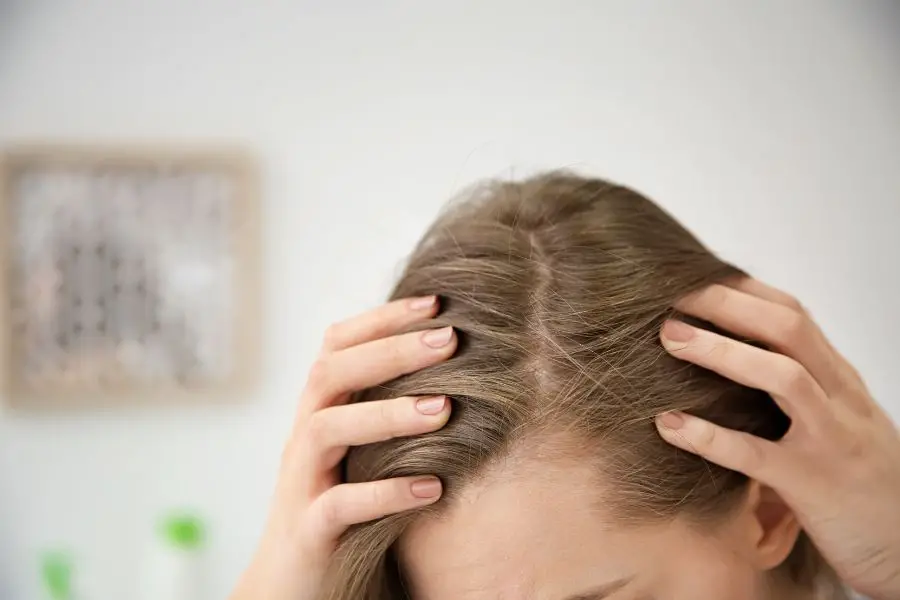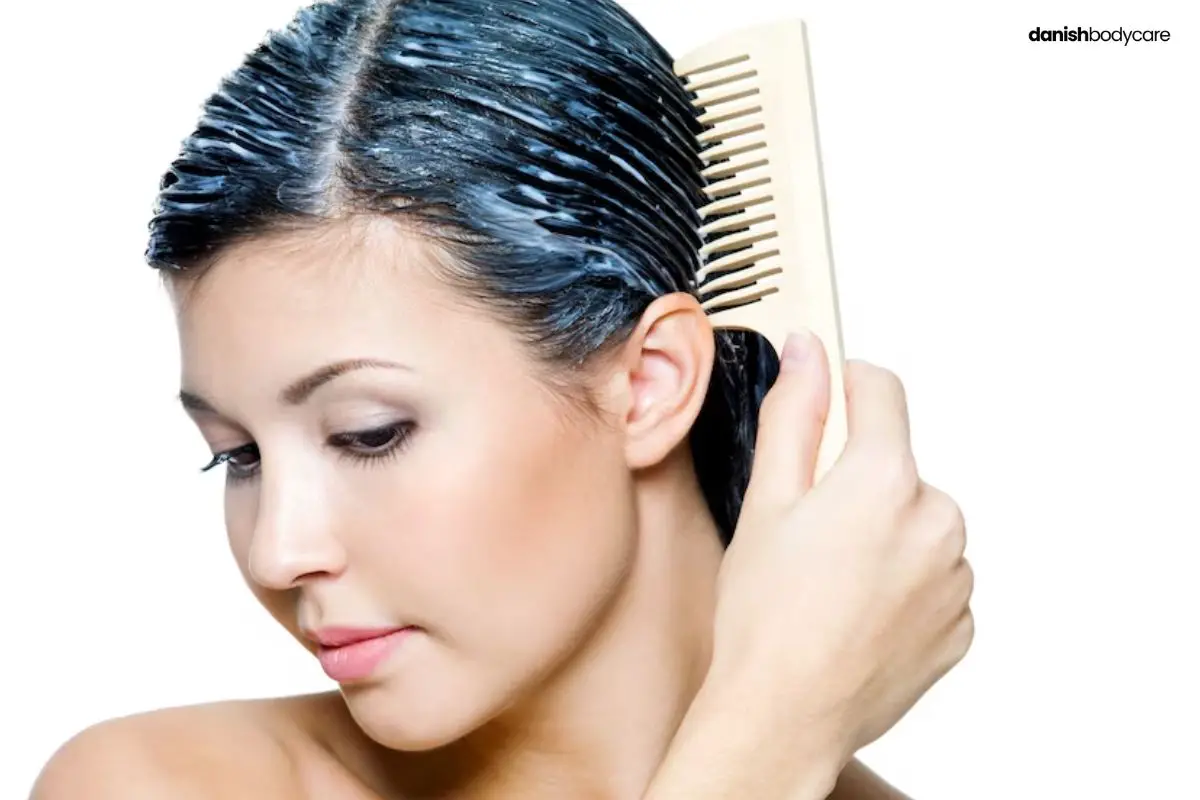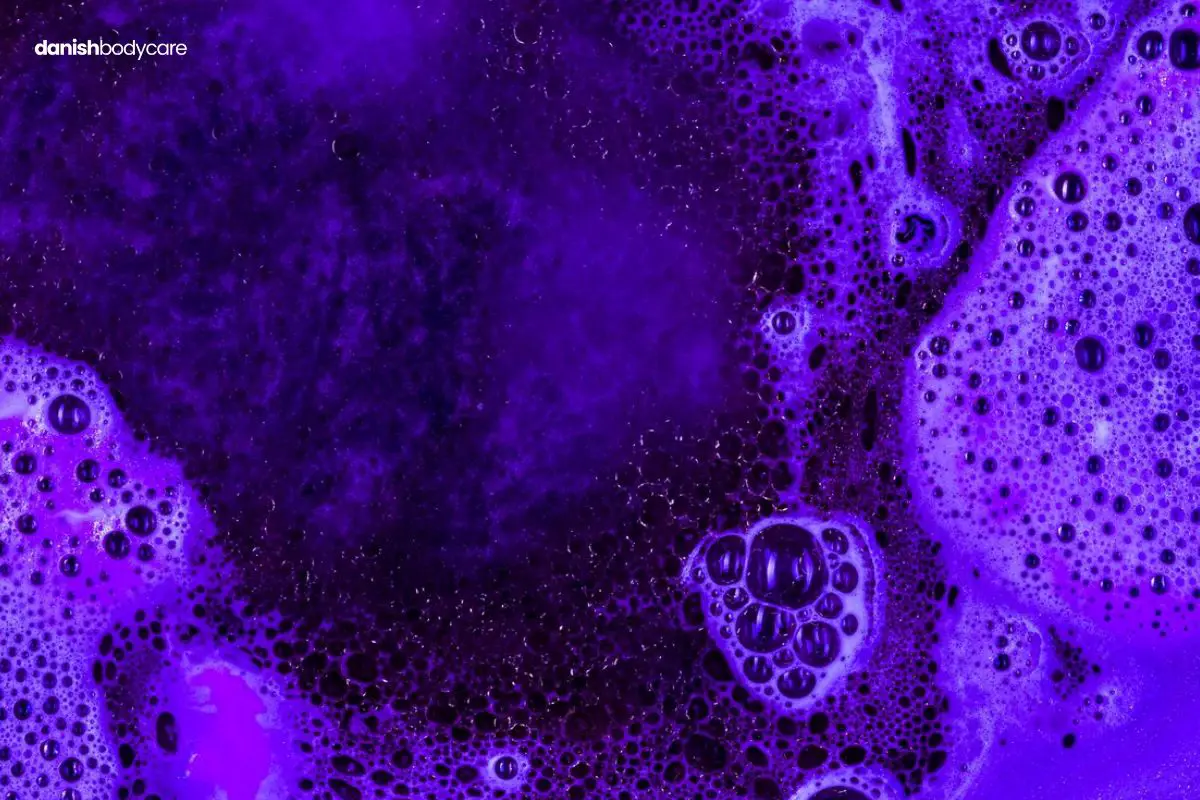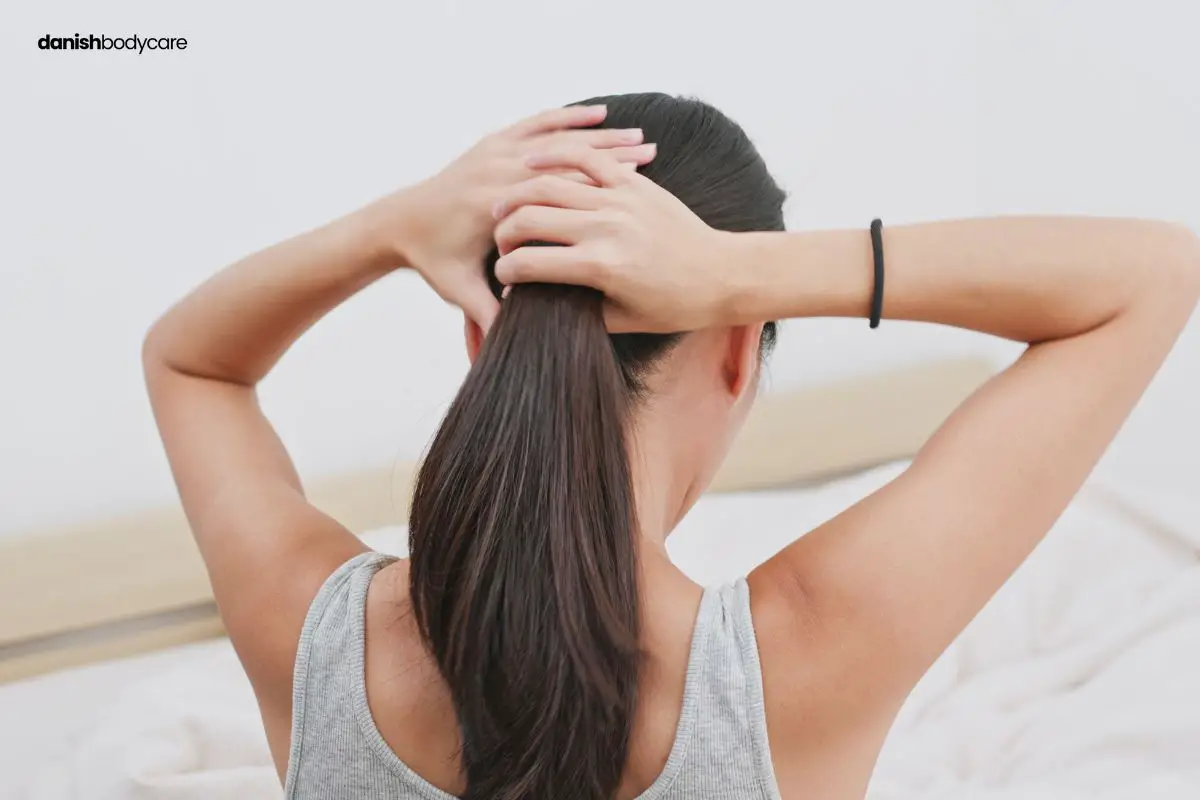Hair bleach consists of chemicals. These chemicals are harsh. Harsher than anything else we use on our skin and hair.
This is also why some people experience burning when bleaching.
Some sources claim that a slight burning is normal. Whether that is true or not, scalp burns after bleaching are not normal. If this happens when you bleach your hair, something has gone wrong.
If you experience scalp burns, seek medical attention in case of infections or further issues.
Is it Normal for the Scalp to Hurt After Bleaching?
Bleach burning the scalp is not a normal reaction, but it can happen. If you experience redness, swelling, or a burning sensation, rinse off the bleach and seek medical advice if necessary.
Remember to follow the manufacturer’s instructions when using bleach products. Consider performing a patch test before applying the bleach to your entire scalp.
Is Bleach Supposed to Burn?
No, bleach is not supposed to burn your scalp. However, the chemical process of hair bleaching can cause irritation and discomfort for some people.
If you experience a burning sensation, remove the bleach as soon as possible to avoid further damage.
Why Does Bleach Burn My Scalp?

Bleach is often used on hair to remove its natural color, making it easier to dye it to a desired shade. But bleach contains harsh chemicals. These can cause damage to the scalp, including painful chemical burns.
Why is Bleach Used on Hair?
Bleach works by breaking down the color pigment in your hair strands, causing the hair to lighten. This process creates a lighter color. Yet, using bleach on your hair comes with certain risks.
Bleach contains chemicals like hydrogen peroxide and persulfates. These can irritate and damage the skin on your scalp, leading to redness, burning, and pain.
In some cases, it can even cause chemical burns or long-term damage.
When you bleach your hair, follow the instructions and don’t leave the bleach on your scalp for longer than recommended. If you experience any burning, rinse the bleach off immediately.
Why You Have Scalp Burns after Bleaching
Bleach burns on your scalp occur because the harsh chemicals in hair bleach damage your skin. It might happen if the bleach is left on for too long or if your scalp is extra sensitive.
One factor that can make your scalp more sensitive is being on your menstrual cycle, which can cause dryness and irritation.
Bleach Burn Symptoms

Minor Bleach Burns
If you have a minor bleach burn on your scalp, you might notice symptoms like redness, swelling, itching, or stinging.
These irritations should be mild and might go away on their own after a while. However, monitor the affected area for any signs of infection or worsening symptoms.
Chemical Burns
More severe bleach burns on your scalp can lead to symptoms like blisters, weeping, scabbing, and even scarring. This type of chemical burn requires immediate treatment to prevent permanent damage or infection.
It’s crucial to watch for signs of inflammation, increased pain, itchiness, and crusty patches around the burn.
Don’t hesitate to seek medical help if the burn appears severe or becomes infected.
How to Prevent Bleach Burns
Here is a step-by-step guide on how to prevent bleach burns the next time you’re bleaching:
- Always read and adhere to the instructions on the bleach bottle, including recommended dilution ratios.
- Wear protective gear like gloves, goggles, and long sleeves to avoid skin or eye contact.
- Only use bleach in well-ventilated spaces to avoid harmful fumes.
- Never combine bleach with other cleaners, particularly ammonia, due to toxic fumes risk.
- Clean any accidental spills immediately.
- Rinse the area thoroughly after usage to eliminate residual bleach.
- Store bleach securely away from children and pets.
The best way to bleach is going to a certified hair professional. The intense chemicals involved with hair bleach are not typically DIY-friendly.
How to Heal Your Scalp After Bleaching
After bleaching, your scalp may feel tender and irritated. In order to heal your scalp properly, follow these tips:
- Don’t wash your hair too often.
- Use a gentle shampoo and a conditioner containing zinc pyrithione.
- Don’t pick at scabs on your scalp.
- Keep your hair away from the affected area.
- Let your hair breathe and avoid using heat-styling tools.
- Seek medical attention in case of severe scalp burns.
How to Soothe the Scalp After Bleaching
Soothing your scalp after a bleach treatment minimizes side effects and discomfort. Use natural remedies like:
You can also take over-the-counter NSAIDs, like ibuprofen or naproxen, to help relieve pain and reduce swelling.
How Long Does It Take for a Scalp Burn to Heal?
Healing time for bleach burns on the scalp varies depending on the severity of the burn and how well you take care of it. Generally, minor scalp burns may take one to two weeks to heal, whereas more severe burns could take longer.
Treating Bleach Burns on the Scalp
If you have burns after bleaching, it’s good to know how to treat them. Here’s what you need to know.
How to Treat Chemical Burns
First, rinse the affected area with cool water to remove any remaining bleach. Be gentle when handling the area and avoid products that may irritate the skin, such as shampoos with harsh chemicals.
Next, follow these tips:
- Keep the area clean: Gently wash your scalp with a mild shampoo and avoid picking at any scabs that may form.
- Apply cold compresses: Use a cloth soaked in cold water or wrapped around ice to help reduce pain and swelling.
- Use pain relievers: Over-the-counter anti-inflammatory medications like ibuprofen or naproxen can help with pain management. Consult your doctor before taking any medication.
- Seek medical attention: If you develop a fever or see signs of infection, contact a medical professional immediately.
Potential Complications and Long-Term Effects of Scalp Burns
If not treated promptly and appropriately, bleach burns on the scalp can lead to complications such as:
- Infections: Open wounds are susceptible to bacterial infections. Prevent infections by keeping the area clean, avoiding contact with dirty objects, and not scratching any scabs.
- Follicle damage: Severe burns may cause harm to hair follicles, leading to hair loss or changes in hair texture.
- Scarring: Improper care of the burn can result in noticeable scars. Use gentle products and refrain from picking at the scabs to minimize scarring.
Don’t forget to consult a dermatologist if your scalp burn isn’t healing. Or, if you’re concerned about potential complications.
Scalp Scabs After Bleach Burns

Scalp scabs after bleaching are a common issue that can occur if your scalp reacts negatively to the irritating chemicals. They can also develop along with burning.
These scabs are uncomfortable and itchy, but they heal fast with proper care.
How to Treat Scalp Scabs After Bleaching
Rinse thoroughly
After the bleaching session, make sure you rinse your hair with enough water. This will help flush out any remaining chemicals from your scalp and hair, which can alleviate some discomfort.
Avoid scratching
Try not to scratch or pick at the scabs, as this may worsen the situation and delay the healing process. Instead, gently pat your scalp with a clean cloth if it feels itchy.
Use gentle hair products
Opt for a mild and sulfate-free shampoo when washing your hair. You can also consider a conditioner with natural, soothing ingredients like aloe vera or chamomile.
Hold off on styling
Give your scalp time to recover by avoiding the following for at least a few days after the bleaching process:
- Chemical treatments
- Heat styling tools
- Tight hairstyles
- Harsh hair products (such as harsh shampoos)
Moisturize
To help soothe your scalp and promote healing, apply a light, natural oil like coconut or jojoba oil to the affected area. This will help keep the area moisturized and reduce dryness.
Remember to be patient, as healing can take time. Maintain a gentle hair care routine and give your scalp the time it needs to recover.
Frequently Asked Questions
What are some home remedies for burnt scalp from hair dye?
If you’ve experienced a burnt scalp from hair dye, you can try some home remedies to help soothe and heal your skin. These include a cold compress, aloe vera, and raw honey.
What are the side effects of hair bleach on the scalp?
Hair bleach can cause various side effects on the scalp, including redness, irritation, dryness, and flaking. Severe side effects include burning.
How to treat chemical burns on scalp from hair relaxers?
If you’ve experienced a chemical burn from a hair relaxer, thoroughly rinse your scalp with cool water to eliminate chemicals. Then apply a cold compress on the area to minimize swelling and discomfort. Utilize a gentle, unscented moisturizer or aloe vera for healing, and keep the area clean. Seek medical advice for severe burns or if infection signs appear.
Can a burnt scalp cause dandruff?
A burnt scalp due to bleaching can potentially cause dandruff. Bleach burns on the scalp might result in redness, swelling, blistering, and itchiness. Sometimes, this irritation can lead to flaky and dry skin, which is commonly known as dandruff.








